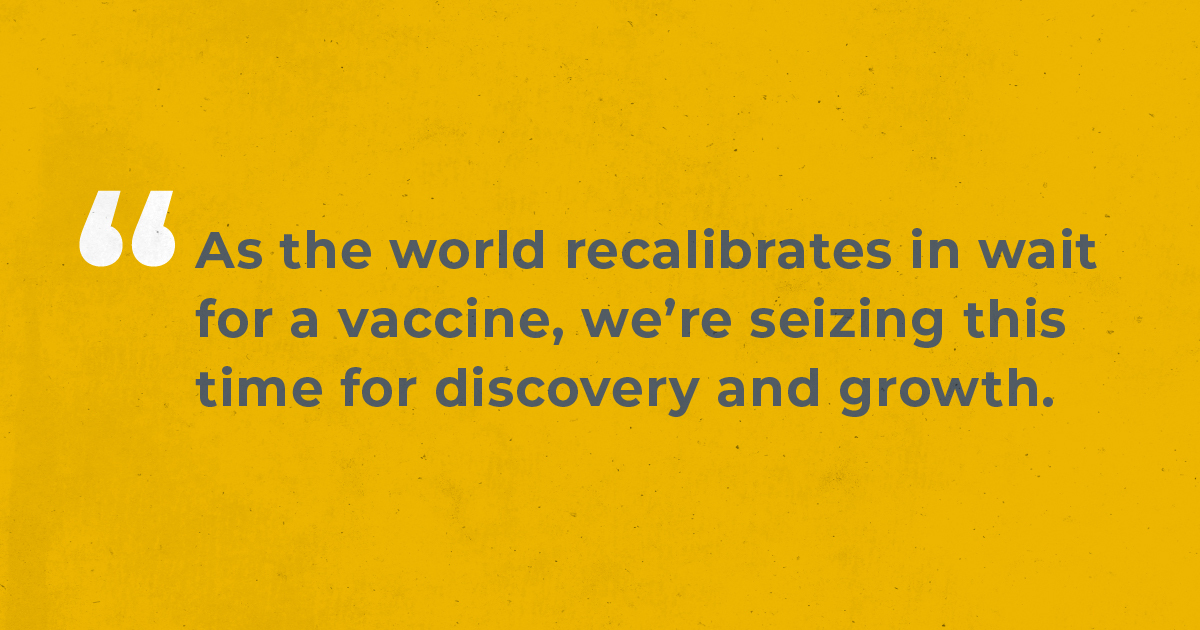Know Thyself (and Your Team)
09.22.20 · Greteman Group
Self-introspection can be good. Team introspection can be even better. Through our 31-year history, Greteman Group has tried about every assessment tool out there. Both national and local trainers have worked with us on everything from communication and leadership styles to thinking creatively and working efficiently.
Every program identifies personality types differently, but there are commonalities. They strive to help us understand our predominant personality types – pretty much fixed at birth – and those we develop through environmental influences (nature versus nurture). All exist to help individuals and businesses achieve their true potential.
We’ve been trying to figure this stuff out for a long time. Thousands of years.

The Chinese got things rolling 3,000 years ago with the I Ching, among the world’s oldest books. Hippocrates was suggesting that people had personas made up of four temperament types as early as 460 BC. In the late 1800s, Sigmund Freud set out to show that innate needs drive our behaviors.
Carl Jung’s personality categorizations in the 1920s offered promise but didn’t find mass acceptance until their WWII-era adaption. A mother-daughter duo used them to create the Myers-Briggs Type Indicator. Who among us is does not know if they’re an INTJ or an ENTP? (Okay, me. I could never keep those 16 acronym-based designations straight.)
Not Just Touchy-Feeley, a Structure for Success
Truly understanding ourselves and those we work with – whether a thinker or a feeler, a doer or a dreamer – helps leverage strengths and mitigate pain points. It helps motivate successfully, really hear the other person, cultivate talent and deepen relationships.
It goes beyond whether someone is an introvert or extravert. One team member’s foundational personality type might be that she methodically thinks through things then offers insights. Another team member’s base personality leads him to spontaneously react in the moment, essentially hearing his thoughts as he speaks them. Knowing these deeply ingrained response preferences helps set up structures that give everyone what they need to contribute successfully. Allow the thinker time to process and get back with you. Give the in-the-now responder the chance to brainstorm with you and offer off-the-cuff first impressions.
There are dangers in using personality testing in hiring, but there are also benefits. We almost always use testing, not to weed out applicants, but as a way to see how a prospective new hire might fit into our team. We also see it as a way to fulfill one of our all-time favorite pieces of advice. It’s from famed ad man David Ogilvy: “If each of us hires people who are smaller than we are, we shall become a company of dwarfs. But if each of us hires people who are bigger than we are, we shall become a company of giants.”

Making Sense of our World and Our Place in It
It might seem odd to be talking about finding team members’ flow in a world consumed by a pandemic. We see it as a perfect opportunity. As the world recalibrates in wait for a vaccine, we’re seizing this time for discovery and growth. You might want to also.
Our personality tool of choice today is Talent Dynamics. It offers profile classifications that feel right. For one, they’re not acronyms. Titles like Mechanic – for folks with dirt under their fingernails and a passion for fixing things – and Deal Maker – for outgoing people, well, like Ashley – keep it real. Assessments can be filled out in no time and the results ring crystal-ball true.
The ancient Greeks inscribed the maxim “know thyself” into the Temple of Apollo at Delphi. Knowing our strengths and weaknesses helps us maximize the former and overcome the latter. It helps us find answers.
